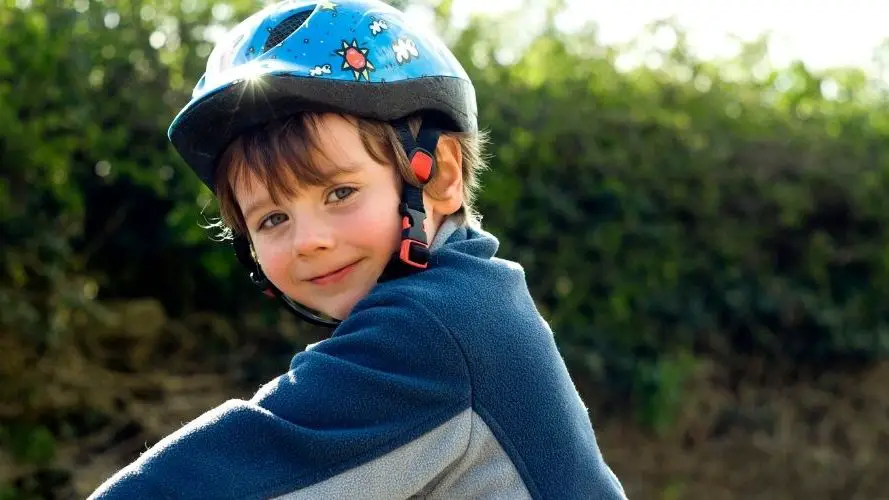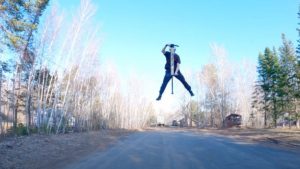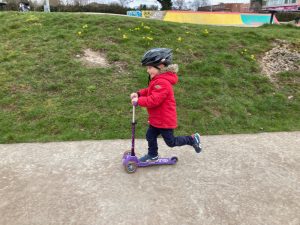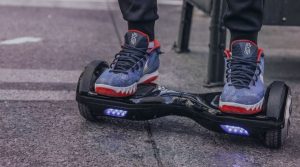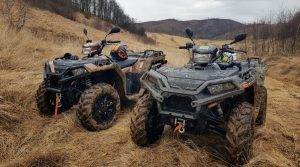While making sure your child is wearing a helmet is a great first step, the better it fits, the better job it will do protecting their heads. When it comes to helmets, we’re not talking about scraped-up knees or elbows. This is their brain, so it’s worth a little extra effort to keep things as safe and sound as possible.
If a helmet moves from side to side, tilts back and forth or is just too small, it offers less protection than a properly fitted helmet. Fortunately, getting the right fit isn’t hard once you know what you’re doing. We show you exactly how to measure your child’s head, choose the right size helmet, and answer your lingering questions.
In this article:
Six quick steps to get the right fit
Follow these simple instructions to find a helmet that fits your child correctly! If you’d rather watch a video, we’ve got you covered.
Step 1: Measure their head
- For this step, you’ll need a soft tape measure, commonly found in sewing kits. If you don’t have one, they’re super cheap and come in handy. You can also use a string or ribbon around their head, and measure that with a ruler.
- Find the widest part of their head (typically just above their eyebrows), and measure the circumference.
- Choose a helmet that fits within their circumference range. Helmet sizes range by company, and if your child is between two sizes, go smaller. Never buy a helmet for your child to grow into.1Bicycle Helmets: Getting the Right Fit
chla.org
Step 2: Make sure the helmet is in the right position
- Take off clips, high ponytails, hats, or anything that could get in the way. Kids with long hair can wear it down, in a braid, or in a low ponytail.
- Put the helmet squarely on the top of their head, not tilting backward or falling into their eyes.
- Rule of thumb: you should be able to fit two finger-widths between their eyebrows and the helmet.
Step 3: Adjust the dial
- While not all helmets come with a dial, it does make finding the right fit much easier.
- Adjust the dial on the back of the helmet until it fits nicely on your child’s head.
- Ask your child to let you know when it is comfortably snug. You can then have them shake their head back and forth. It should stay in place, just above the eyebrows, unbuckled.
- Some helmets will also have removable pads or pads of varying thickness, which you can either use or remove based on if they provide a better fit.
Step 4: Adjust the side straps accordingly
- With your child still wearing the unbuckled helmet, adjust the side straps to form a Y at the bottom of each ear.
- This will prevent the helmet from moving around on their head. If you can see too much forehead, or it falls into their eyes, adjust the side straps.
Step 5: Tighten the chin strap
This one’s simple enough. buckle the chin strap, and tighten it until you can only fit one finger between the strap and your child’s chin.
Step 6: Helmet checklist
- Does the helmet visibly move when your child opens their mouth? (Yes)
- Are there 2 finger-widths between the eyebrows and helmet? (Yes)
- Does the helmet slide around when they nod or shake their head? (No)
- Can they fit a finger between the chin strap and their chin? (Yes)
- Can your child see straight ahead and side to side? (Yes)
Important! Check on helmets frequently to make sure straps and knobs haven’t loosened. Adjust as needed, and size up as soon as they’ve outgrown it.
Related: How to Teach Your Child to Ride a Balance Bike: A Simple Guide
Bike helmet FAQs
Does my child really need a helmet?
Doctors and experts unequivocally recommend helmet use, and it’s the law in some states (and for good reason). If your child is biking, skateboarding, skating, scootering, or participating in any activity that risks trauma to the brain, a helmet is the best way to prevent it.
A properly fitted bicycle helmet can reduce the risk of head injury by at least 50%.2Bicycle Safety Statistics May Surprise You
nsc.org There’s no doubt about it, wearing a helmet can and will save a life.
Need some proof? Check out these staggering helmet statistics.
Should I buy a used helmet?
Unfortunately, similar to car seats, helmets are one-hit wonders.3Are Used Bike Helmets Safe to Buy for Kids?
Buy a new helmet for each child, replace after any major impacts, crashes, or drops, and size up when needed.
New helmets are available for around $20. However, if it’s between a used helmet or no helmet, absolutely go with used.
What should I look for in a kids’ helmet?
Your child’s helmet needs to be certified by the Consumer Product Safety Commission (CPSC), and may be certified by the American Society for Testing and Materials (ASTM). CPSC certifications are tailored to bicycles, while ASTM certifications are more important for skateboarding or multi-sport helmets. Here’s a list of helmets that are dual-certified.
All helmets sold in the U.S. have to be CPSC certified (complete with a sticker). Any helmet you buy will meet the required safety standards, but getting the right fit means it’s as safe as possible for your child. Getting the best fit is made easier by a dial, adjustable side straps, and an adjustable chin strap.
As your child gets older and starts to fight you on helmet use, you may have to entice them with something that looks cool or appeals to them in some way. These are our 10 favorite researched and reviewed kids’ helmets.
What different types of helmets are there?
There are several different types out there, and it’s easy to get confused about the best option for your child.
- Traditional bike helmets tend to have more vents, a visor and are lightweight. They will be CPSC certified.
- Multi-sport helmets are what you typically see skateboarders wearing. They’re heavier, have fewer vents, no visor, and are usually CPSC and ASTM certified. You’ll probably have a better chance of getting your older child/adrenaline junkie to wear this type of helmet.
- Toddler helmets are obviously smaller and often have extra protection for the back of the head, which prevents the helmet from slipping forward.
What extra features are there?
Extra features aren’t all necessary, but they can be nice to have and increase safety. Some to be on the lookout for are:
- Adjustability. This is pretty much the bare minimum for helmets, and adjustability is needed for a proper fit. Look for a spin dial, removable pads, chin strap adjustability, and side strap adjustability.
- Buckle type. There are traditional buckles and pinch-free buckles. Pinch-free buckles may be magnetic or have a plastic guard in between the skin and the buckle.
- Construction. There are two types, in-mold and hardshell. In-mold helmets have a thinner outer shell that may or may not cover the entire surface. They are lightweight and cannot be ASTM certified. Hardshell helmets have a thick outer shell that covers the entire surface of the helmet, making them better for skateboarding and high-impact activities.
- Visor. Most traditional bike helmets have visors, which will help keep the sun out of your child’s eyes.
- Vents. Most helmets come with vents, and some have more than others. They’re nice to have to keep sweaty heads cool on warm days.
- EPS Liner. EPS foam is used to line helmets, and it absorbs and distributes impact.
- MIPS technology. Multi-directional Impact Protection System (MIPS) technology works to reduce the rotational force felt by your child’s head with a slip-frame between the liner and the head. While it’s more expensive, MIPS technology has been proven to reduce brain trauma, particularly in high-impact sports.4What is MIPS Helmet Technology? How Does it Work?
evo.com
The difference between MIPS and EPS is that EPS will absorb the impact, while MIPS will deflect it.
Related: Balance Bike vs. Tricycle? It’s a Balance Bike Every Time
The bottom line
Experts agree: helmets are a must. They also agree that a proper fit saves lives and makes helmets significantly more effective. While your child may fight you on it, it’s not something you want to back down on.
Wear your own helmet while biking to set a good example, and consider letting them pick out their own helmet in a favorite color, a fun pattern, or even one with a rubber mohawk.


